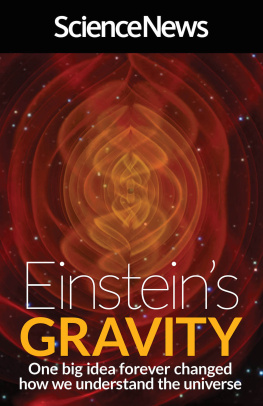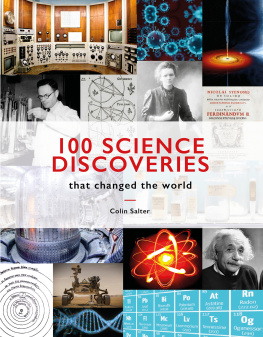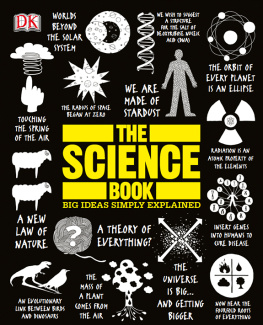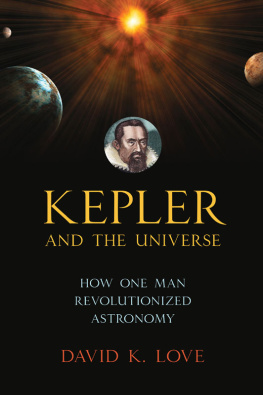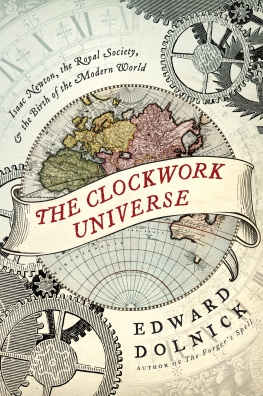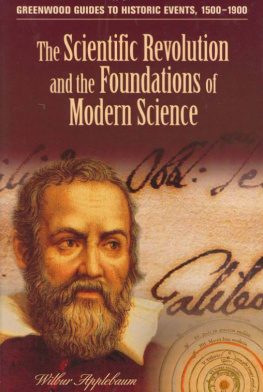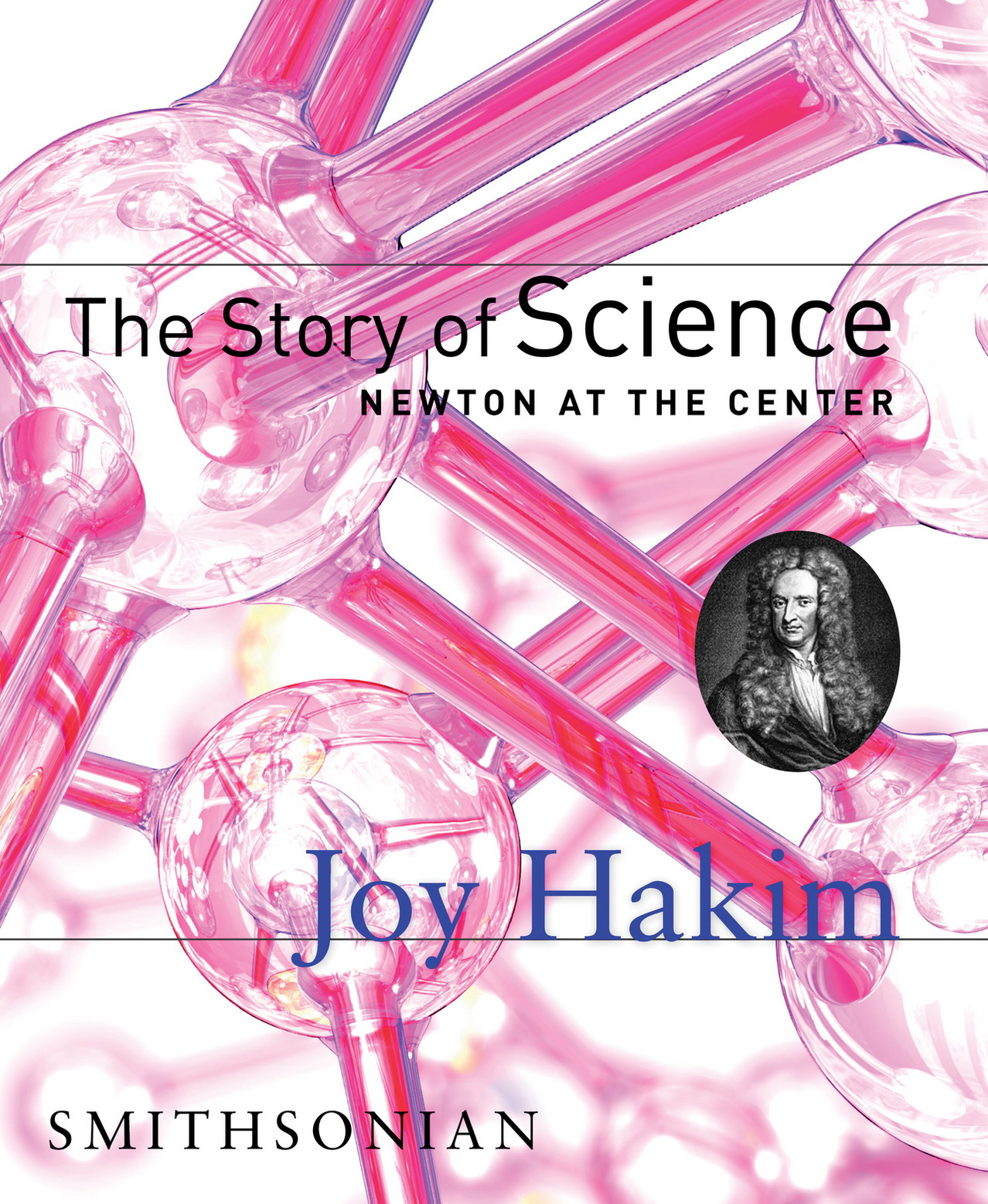The story of science: Newton at the center/Joy Hakim.
p.cm.
Includes index.
1. ScienceHistory. I. Hakim, Joy.
For permission to reproduce illustrations appearing in this book, please correspond directly with the owners of the works, as listed in the individual . Smithsonian Books does not retain reproduction rights for these illustrations or maintain a file of addresses for photo sources.
Grateful acknowledgment is made to publishers who have granted permission to quote from their copyrighted works (see ).
The Scientific Questand This Book
Read this book and youll know more science than Isaac Newton did. And since Newton was one of the smartest humans ever, thats saying something. Like all good scientists, Newton understood that he was involved in a quest that can never be finished. He knew that his work would get trimmed and topped.
Artists and literary figures dont think like that. No one wants to change or add to Shakespeare. But science keeps building, and when new blocks are put in place, that often means throwing out the old or adapting it before heading onto new heights. So theres nothing dull or static about sciences story. Its a tale of exploration, one that will stretch your mind to its limits.
Scientists want to know how the universe works. From the time of the ancient Greeks to now, thats been the scientific quest. In the sixteenth century that investigation was heating up. There were questions that needed answers.
It seemed obvious then that heat was a substance, an invisible something related to the Greek element fire. But Francis Bacon (a contemporary of Shakespeare and Queen Elizabeth I) had another idea. He wrote, heatis Motion and nothing else. Heat is only motion? When your daily warmth comes from a fireplace, that concept seems like a stretch.
The dispute was a big one. The heat-is-motion idea attracted Robert Hooke (a man Isaac Newton detested), who described heat as being nothing else but a very brisk and vehement agitation of the parts of a body. Heat is not a thing? That idea seemed bizarre. The other folks, the heat-is-something crowd, called their tangible heat stuff caloric and thought it was an element.
This wasnt the only disagreement. Newton said that light is made up of corpuscles; by that, he meant tiny particles. But a Dutchman, Christiaan Huygens, said light isnt made of particles; its wave action.
How important were these disagreements? Very. Before they could finally be settled, it was determined that all matterfrom your toenails to the stars in the heavensis made of , that those particles are in constant motion, and that most of them carry an electric charge. Those particles in motion produce heat, exert magnetic force, describe atoms, and, in this technological age, carry messages. In other words, particles in motion underlie just about everything. Harnessed as electricity, they move modern civilization. But the wave folks, like Huygens, werent wrong either. Science is more complex than anyone had imagined.
We might never have learned any of this without the Scientific Revolution that was gestating in Francis Bacons day. (He was born in 1561.) Besides his mental grasp of heat, Bacon figured out that it takes time for light to travel, time that can be measured. (Almost everyone else thought light traveled instantaneously.) But aside from those astonishing insights, Bacon wasnt much of a scientist; he was a great propagandist who inspired others with his vision of what science could accomplish. The science he foresaw was not based on common sense or theology (religious belief) or Aristotle. It started with observation and experimentation and advanced to proofs, something we now call the scientific method. Bacon thought of scientific research as a collective enterprise aimed at benefiting all humankind.
The Scientific Revolution evolved from Bacon, from the French philosopher Ren Descartes, and from a few other original thinkers. Why did it happen in the West? It was, in part, a freedom thing. European nations, in varying degrees, managed to provide enough freedom to allow for creative ferment and question asking.
Those who enlightened us, who gave us a scientific basesomething we now call classical physicswere a colorful bunch, ranging from charismatic Galileo Galilei to lonely Isaac Newton to a slightly unsavory American spy who happened to be way ahead of his time when it came to understanding heat. What they had in common was a passion to know how the world works. They, along with lots of others, established a foundation for modern science. Thats the story this book attempts to tell.
By the way, this cast of characters did not call themselves scientists. That word was invented by William Whewell, an English classics scholar. In 1840, he wrote in The Philosophy of Inductive Sciences, We need very much a name to describe a cultivator of science in general. I should incline to call him a Scientist. Before Whewell, cultivators of the physical sciences were known as natural philosophers. By the twentieth century, scientist had taken root.
Dealing with all thisthe stories and the scientific informationin a book as beautifully illustrated and conceived as this one, has been the work of an unusually talented team. Byron Hollinshead led the project. Sabine Russ researched and chose all the pictures, asked cogent questions, and dealt with the big and small decisions involved in putting a book together. Lorraine Jean Hopping, the editor, has been much more than just that. Shes added to the writing (credited as LJH on some sections) and brought real expertise in scientific education to the mix. Marleen Adlerblum created the design. Turn the pages and youll see how good she is. Kate Davis did knowledgeable, amazing copyediting. Together they have been enthused and dedicated to a degree that few writers are lucky enough to enjoy. I couldnt be more grateful.


